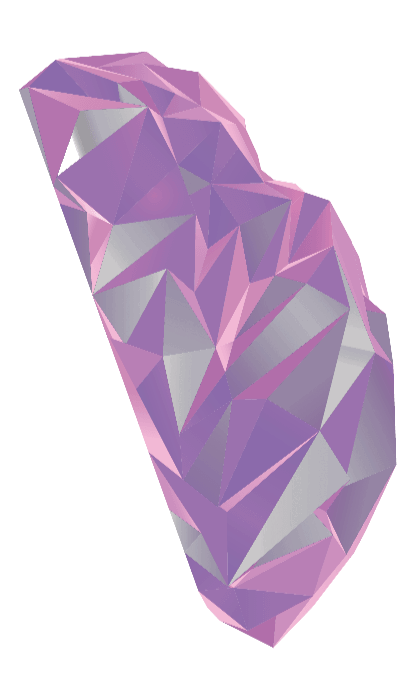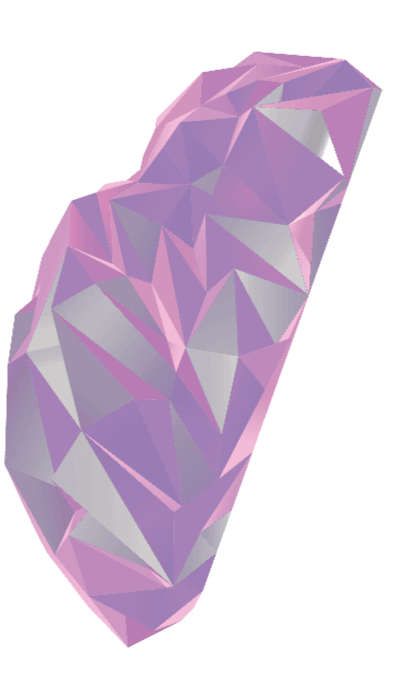Her thoughts revolve around the female brain
In medicine, women are often treated as if they were men. Antonella Santuccione Chadha wants to change that.
Many brain diseases affect women more than men. But this is hardly taken into account in research. To change this, scientists founded the Women’s Brain Project.
By Lena Stallmach, 1.16.2021 (original in German, see link below)
Fog hangs over the lake and rain is on the way. But Antonella Santuccione Chadha did not check the weather forecast, or at least it has not influenced her choice of attire. In a lightly-woven red wool coat and red ballerina pumps she picks her way around the puddles, speaking on the phone in a voice that carries far.
Red is her favourite colour, she explains. A few years ago, she packed by chance only red clothes in her suitcase for an international conference on Alzheimer’s disease. “Every day I wore red. They must have thought I was a freak,” she says with a laugh. But she doesn’t come across as a freak, rather as a woman who is passionately dedicated to research for her fellow human beings.
The Women’s Brain Project is particularly close to her heart. She founded the organisation with three colleagues to research female specific factors in brain diseases. Because men and women are not the same, as the pandemic has shown. Men are infected more frequently and become more seriously ill from Covid-19 than women. In many psychiatric or neurological illnesses, the opposite is true. For example, women suffer more frequently than men from depression, anxiety disorders, multiple sclerosis, and even some types of brain tumour. Much too little attention is paid to these differences in research, Santuccione finds.
For her work, she has received numerous honours: In 2019, ‘Women in Business’ magazine named her Woman of the Year in Switzerland, in 2020 she won the World Sustainability Award and most recently she was awarded the national prize Medicina Italia. The latter prize was awarded to Santuccione for her contribution to her homeland during the Corona crisis.
The world-renowned researcher from Pescara
Santuccione has lived for many years in Switzerland, with her husband and two sons in Thalwil. But she grew up in a small village in the Italian region of Abruzzo. She lived on her grandparents’ farm because her mother worked as a teacher and her father, a police officer, was often away from home working. From her bedroom window she saw the cows in the fields and the swallows that returned every year to build their nest under the barn roof.
Last February, when Covid-19 patients were arriving in the hospitals in great numbers, she was very worried. She heard from doctor friends about the conditions in hospitals in Bergamo. There were shortages of everything – beds, personnel and protective equipment. She feared for the lives of friends and her parents. And so she went into action: she researched, delivered information, made connections to source protective materials. She also convinced the head of local government in Abruzzo, Marco Marsilio, to set up a hospital for Covid-19 patients. At the opening of the building a few weeks later he said that the establishing of the hospital was also thanks to Santuccione, the world-renowned researcher from Pescara, who had bombarded him with text messages.
Maintaining networks and exchanging information is part of Santuccione’s daily routine. She worked for several years for the pharma company Roche and recently took up a position in the biotech company Biogen. As Head of Stakeholder Engagement in the field of Alzheimer’s, she fosters relationships with other companies, patient organisations, doctors and expert associations. It’s always about the patient for her, she says. They need much more support and good medication, which unfortunately don’t exist yet. And this sounds so authentic coming from her that you can immediately see the doctor in the white coat that she once was.
Santuccione worked for six years in psychiatry at the University Hospital of Zurich. At that time, she didn’t just look after patients. In the laboratory of Christoph Hock and Roger Nitsch she closely followed how her colleagues were developing antibodies against Alzheimer’s. She had no idea then that she would later work for Biogen, the company that would buy the patent from the Swiss researchers with the goal of getting approval for the medication.
A foetus without a brain
The 46-year-old spends most of her free time working for the Women’s Brain Project. She wants to bring about change through the organisation, as quickly as possible. This quest is partly connected to a personal experience. She was 30 when she became pregnant for the first time. “I was so happy when I saw the first ultrasound image of my child, a girl,” she recalls. Her doctor pointed on the screen to the legs, the stomach, the arms, the eyes – and then she broke off suddenly. The little girl had no brain.
Santuccione’s eyes fill with tears when she talks about it. As a doctor she was prepared for many things, Down syndrome, autism – but no brain! “The totally irony of fate: a brain researcher is carrying a foetus without a brain.” She had to terminate the pregnancy; the baby would not have survived. Later, she found out that her baby had suffered from a rare disease that affects female foetuses more often than male foetuses. We don’t know why this is the case – not yet.
But this experience is not the only reason why Santuccione wants to turn the focus onto the differences between men and women. From 2014 to 2018 she worked for the Swiss surveillance authority for medicines Swissmedic and checked applications for the approval of new medications. From this work she knows that women are often underrepresented in clinical studies. Especially in the early phases, when important information about the dosage and toxicity of the active substance is gathered. That has consequences: in eight out of ten cases of drugs whose approval was withdrawn, severe side-effects among women was the reason.
In the meantime, it is now recognised that with some medications women can react differently to men, and therefore all new active substances should be tested on both sexes. In 2019 a HIV medicine was approved but only for mem, because the active substance had not been tested on women in the clinical studies. This injustice is unacceptable for Santuccione.
The Women’s Brain Project first achieved wide attention with its scientific review of sex-based differences in Alzheimer’s disease. Twice as many women as men suffer from the disease. One possible explanation for this is that women live longer. But that alone is not enough to explain the unequal distribution.

Differences hardly researched
For their research paper, the researchers combed many studies, looking for differences between men and women. The studies showed that cognitive decline progressed quicker in women than in men and that the brain tissue broke down more severely. Hormonal differences as a possible cause was discussed. In addition, the scientists demonstrated that many known risk factors for Alzheimer’s, such as a lower education level, poverty or heart and circulatory diseases, are not evenly distributed among the sexes. This applies not only to biological differences but also to socio-cultural factors that can increase risk. For example, the care of an Alzheimer’s patient and the stress connected to that appears to increase the risk of developing Alzheimer’s. This care is mostly taken on by female family members.
Above all, the scientists pointed out that the differences had hardly been researched although they were so obvious. The publication brought the organisation a lot of attention. With the success also came the first donors, philanthropists and research supporters like the Swiss National Science Foundation. Most of the collaborators of the Women’s Brain Project, including Santuccione, still work pro bono but the organisation is growing. And in the meantime, recognition is now coming from colleagues who first perceived it as unnecessary to focus on these differences.
Differences also seem to attract Santuccione in her private life. In 2006 she fell in love with an Indian ETH graduate who had grown up in Germany. They were soon a couple, the engineer from a large Indian family of engineers and the doctor from a small village in Abruzzo. Both families kicked up a fuss. They were afraid that the cultural differences between the couple would be insurmountable in the long-term. But these fears were unfounded. “Of course we fight, like every couple, but never over cultural differences or childraising,” Santuccione says.
How easily this cultural union is being lived is shown in their shared home in Thalwil. Finely decorated wooden chests from India contrast with a classic cabinet displaying gleaming white china – a wedding present from the Italian parents. Her husband serves chai and later cooks spaghetti with sugo.
Recently he’s been supporting his extremely busy wife a lot. But Santuccione is no stranger to the classic double-burden of women. When her first son was born and she was working as a doctor in Zurich, her husband accepted a position in Germany. “That was a hard time,” she says, with a quiet note of accusation in her voice.
High goals
Santuccione does not see herself as a feminist. For her it is only about justice. In feminist circles it was long frowned upon to describe biological differences between men and women, for fear that these would be used to cement traditional roles. Santuccione takes another approach. By researching differences, she wants better and equal health treatment for all.
To achieve this, she is setting her sights high. With the Women’s Brain Project, she wants to found a research institute, fully dedicated to the research of sex differences in brain diseases. She is in talks with a number of donors. “We need a lot of money for this but I believe we will raise it,” she says.
In her basement, there are rows of glass jars of preserved vegetables – from Mamma in Italy. Santuccione says she would like to grow vegetables later herself and take over her parents’ farm. But then her gaze falls on an impressively accurate architectural drawing of a Roman building. She used to sit for hours in front of the houses and draw. “I should have been an artist,” she says with a touch of wistfulness. Life is simply too short.
Copyright © Neue Zürcher Zeitung AG. The original article in German can be read here.



